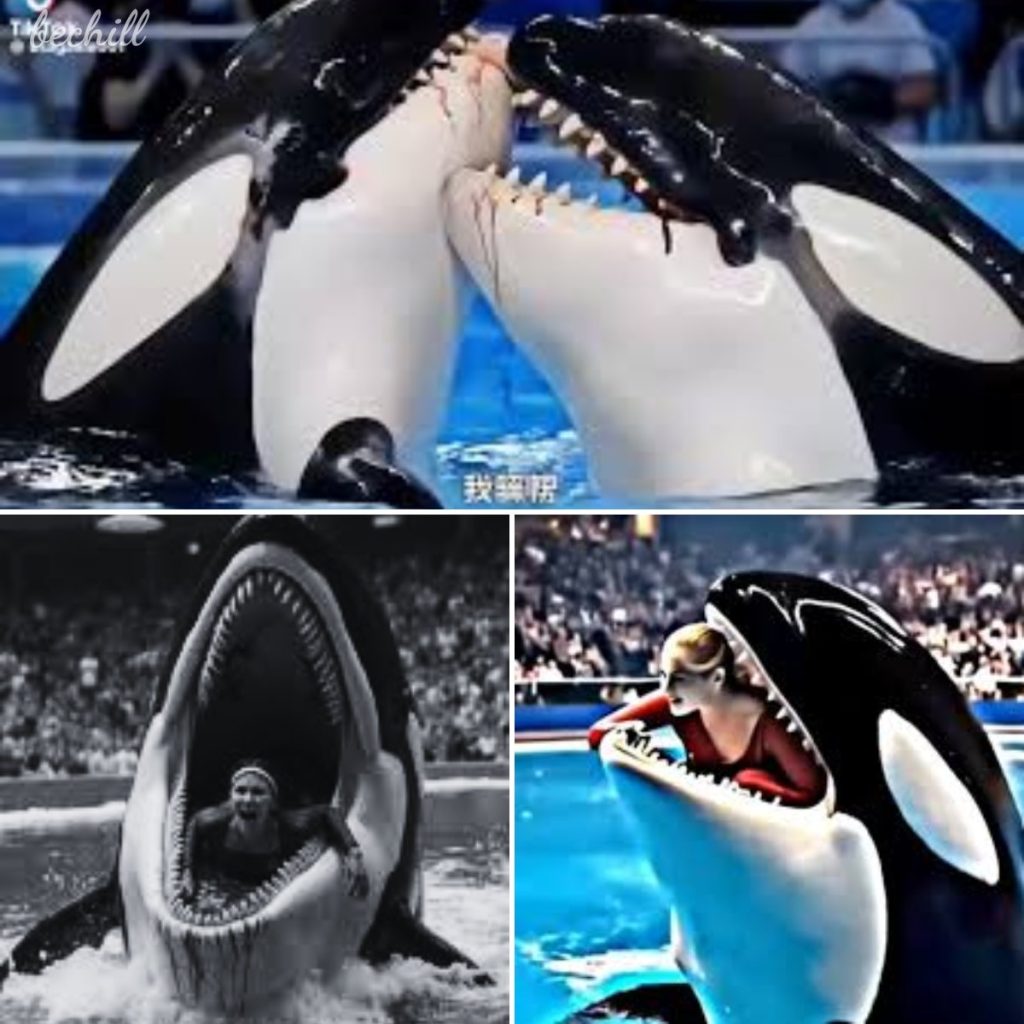
SeaWorld Spent $85,000 to Bury an Orca Attack — But the Truth Leaked, and What Happened Behind Closed Tanks Will Leave You Speechless
SeaWorld, a name synonymous with family-friendly marine entertainment, has long been a subject of controversy, particularly regarding its treatment of orcas, also known as killer whales. These majestic creatures, known for their intelligence, complex social structures, and vast migratory patterns in the wild, have been confined to small tanks for decades, performing tricks for cheering crowds. However, beneath the polished surface of SeaWorld’s carefully curated image lies a darker reality—one marked by animal suffering, corporate cover-ups, and tragic incidents that have sparked global outrage. A particularly shocking revelation came to light when it was reported that SeaWorld allegedly spent $85,000 to suppress details of a violent orca attack, an act that underscores the lengths to which the company has gone to protect its reputation. Yet, despite their efforts, the truth about what happens behind the closed tanks has leaked, exposing a grim narrative of captivity, aggression, and ethical failure.
The orca attack in question is not an isolated incident but part of a disturbing pattern documented over decades at SeaWorld and other marine parks. Orcas, apex predators that can swim up to 150 miles a day in the wild, are confined in tanks as small as 34 feet deep—equivalent to a bathtub for creatures of their size. This unnatural environment, coupled with inadequate social structures and relentless performance schedules, has led to documented cases of psychological distress and aggression. One of the most infamous cases involved Tilikum, a male orca linked to three human deaths, including the tragic killing of SeaWorld trainer Dawn Brancheau in 2010. During a “Dine with Shamu” show, Tilikum grabbed Brancheau, dragging her into the pool, where he inflicted severe injuries, including scalping her and fracturing multiple bones before drowning her. This horrific event, witnessed by horrified visitors, was a stark reminder of the dangers of keeping such powerful and intelligent animals in captivity. Yet, SeaWorld’s response was not to address the root causes but to allegedly attempt to bury the incident’s fallout, prioritizing profit over accountability.
Reports suggest that SeaWorld’s $85,000 expenditure was part of a broader strategy to mitigate the public relations disaster following such incidents. This included legal settlements, lobbying efforts, and media campaigns to downplay the severity of orca aggression and shift blame away from the company’s practices. For instance, after Brancheau’s death, SeaWorld initially described the incident as a tragic accident, with some officials suggesting Tilikum was being “playful” or attracted to Brancheau’s ponytail. This narrative starkly contrasted with eyewitness accounts and autopsy reports, which detailed the brutal nature of the attack. Furthermore, SeaWorld’s corporate incident logs have recorded over 100 instances of orca aggression, many resulting in trainer injuries, yet the company has consistently minimized these events, often withholding critical details from the public and regulators.
The truth behind these closed tanks reveals a systemic issue: orcas in captivity suffer immensely. In the wild, orcas live in tight-knit family pods, diving up to 1,000 feet and living up to 90 years for females and 70 for males. At SeaWorld, their lifespans are drastically reduced, with many dying in their teens or twenties due to infections, stress-related illnesses, and injuries from confinement. Orcas like Corky, captured in 1969 and still held at SeaWorld San Diego, have spent over 50 years in tanks, swimming in endless circles with little stimulation. Physical ailments, such as collapsed dorsal fins—a rare occurrence in the wild but common in captivity—and broken teeth from chewing on tank walls, are covered up with black zinc oxide to mask sunburns and injuries from public view. Even more disturbing are reports of SeaWorld’s practices, such as forcibly impregnating female orcas and separating calves from their mothers, actions that disrupt their natural social bonds and contribute to their distress.
The leaked truths have fueled movements like “Empty the Tanks” and campaigns by organizations such as PETA, which have exposed SeaWorld’s practices through documentaries like Blackfish. This 2013 film, centered on Tilikum’s story, brought global attention to the ethical issues of orca captivity, leading to a 35% drop in SeaWorld’s stock and a 13% decline in attendance. Public outrage grew as former trainers revealed shocking details, such as the use of food deprivation as a training tactic and the cover-up of animal suffering. Despite SeaWorld’s claims of conservation and education, less than 1% of its profits have been directed toward wildlife rescue or rehabilitation, undermining its public image as a conservation-focused organization.
SeaWorld’s attempts to bury incidents like the orca attack have not silenced the growing call for change. The company ended its orca breeding program in 2016 and phased out theatrical shows involving orcas, but these changes came only under intense public and regulatory pressure. Critics argue that SeaWorld could invest in coastal sanctuaries, where orcas could live in more natural environments, but the company has resisted, clinging to a business model rooted in exploitation. The $85,000 allegedly spent to suppress one attack is a small fraction of the $15.7 million in fines SeaWorld has faced for safety and consumer protection violations, yet it symbolizes a deeper truth: the company’s prioritization of profit over the welfare of animals and employees.
The leaked revelations about SeaWorld’s practices are a wake-up call. They challenge us to reconsider the morality of keeping intelligent, social creatures in captivity for entertainment. The stories of Tilikum, Corky, and countless other orcas are not just tales of tragedy but indictments of a system that values spectacle over sentience. As the truth continues to surface, it demands action—whether through boycotts, advocacy for sanctuaries, or supporting legislation to end captive orca programs. The horrors behind SeaWorld’s closed tanks are no longer hidden, and they leave us with a choice: to turn away or to demand a future where these magnificent creatures are no longer prisoners of profit.